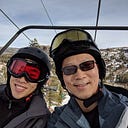The smarter car revolution is happening just like the smartphone revolution is inevitable. The question for the current car giants is to be “the Nokia” or “the Samsung” of smarter cars. Yep, there could be “an Apple”, but the position is taken by Tesla for years. So, let’s take a closer look at the key enablers, and the lessons for incumbent carmakers to learn.
Renewable as a new norm
Since Tesla pushed the 1st Over-The-Air(OTA) software update in 2012, the age of smarter cars has begun when new features & enhancements can come to old shells overnight. A recent Tesla FSD update even improves range & efficiency because of better autopilot regenerative braking. There is no going back.
Even the industry only realizes OTA is not only a must, but also a huge cost saving for recall, the “new norm” has been 10 years in building. At least, all newcomers are gearing up to compete. In Feb. 2022, Lucid released new features to the DreamDrive driver assistance system by an OTA software update. Rivian also improves car performance in the 2022.3.1 software update.
However, this is very different from the “ship-and-forget” model in the traditional car software business. To thrive in this brave new world, throwing more warm bodies to the death march will never work 😉. It did not work for “Nokias” nor any feature phones I worked on and observed closely. I don’t see how that will work for smarter cars. Because the growth of complexity outpaces any linear expansion of SW engineering capacity when a system is opening up. Unfortunately, the current “model-year thinking” makes it even worse because it multiplies the cost & complexity each year. So, what may be a better answer?
A rich ecosystem play
Separation of Concerns is a simple principle to design a complex system. Only it takes more effort & discipline to do properly. Too often, incumbents easily “skip” it because of the production schedule pressure. It takes courage to properly balance the investment of long-term solutions and the imminent remedies. Because firefighting is already taking more than 120% of capability in every business day. So, how may we do better as a society?
What if we can create a rich ecosystem, and make it self-sustainable? This is not too crazy since the smartphone revolution has made the shift before. Taking Android as an example, the rich ecosystem may sustain 4 “layers of life”.
1. Apps
Android SDK & tools enable 3rd party innovations by decoupling app development from device development. And app stores create the market to sustain the app business. In 2020, Polestar 2 comes with the 1st app store for cars: Google Play Store. Since that anyone, including OEMs can enrich users’ life & sustain their business of innovation any day. I bet Tesla will open its app store, sooner or later. Even I do wish it in 2022. Tesla may open its app store in 2023, the earliest because there are many blocks to be built to open an app store.
2. Branded UX
System & core user experience can be “renewable” by OTA updates. OEMs have to own this to provide their own unique experience. Which is critical for top car brands. A big challenge for incumbents is how to continuously delight the users after the sale & across “model years” sustainably. Tesla has been doing so for years.
Also thanks to the smartphone revolution, consumers are used to this already. For example, Samsung One UI runs on a wide range of models. And this Feb., Samsung extends its upgrade promises of One UI & Android to 4 generations. One thing is sure for the long run, consumers will ask for more. A brand can lead to set the gold standard as Apple & Tesla do, or follow to compete.
3. Cross HW platforms
HW implementations can be owned & sustained by OEM itself or their HW platform vendors for years easier. Android Treble provides the architecture & interface to separate these concerns from the OEM systems. Some capable OEMs have been taking advantage by properly adopting that. For example, they can maximize the reach of one branded UX for most device models & even across HW platforms. Furthermore, they get a head start to develop their system without waiting for new HW. And, it became much easier to gate the quality of the deliverables from their HW vendors. Because the system development is decoupled from the HW.
4. Virtualization
Virtual machines can maximize the value of computing platforms for a much longer time if not forever. Also, isolating open systems from the HW, makes the host system much safer while easier to update each guest system. More importantly, the total HW cost can be lower even with the increasing demand for high-performance computation. In 2020, Apple’s ‘One More Thing’ — M1 has changed the brain of personal computing forever. NVIDIA is selling the same idea/its DRIVE Orin for cars, and I bet Tesla will soon play the same move in HW 4.0 earliest.
To modernize computation in cars, 2 paradigm shifts have to happen. A) to drive down the unit cost of high performance computer by adopting general computing chips for the economies of scale. And B) isolating the domains of computing: self-driving, driver infotainment & passage infotainment via SW architecture instead of HW limitations. Each domain of computing will be just like an aquarium without interfering with each other. The development, maintenance & updating will be much easier & more sustainable.
Full Disclosure
The opinions stated here are my own, not those of my company. They are mostly extrapolations from public information. I don’t have insider knowledge of those companies, nor a whatever expert.
